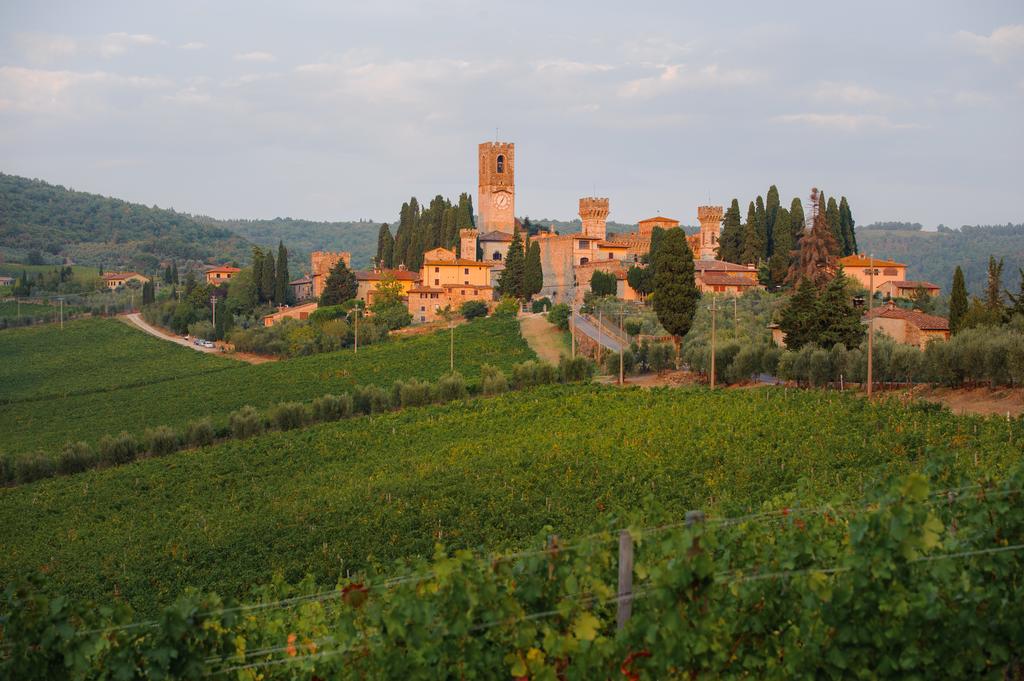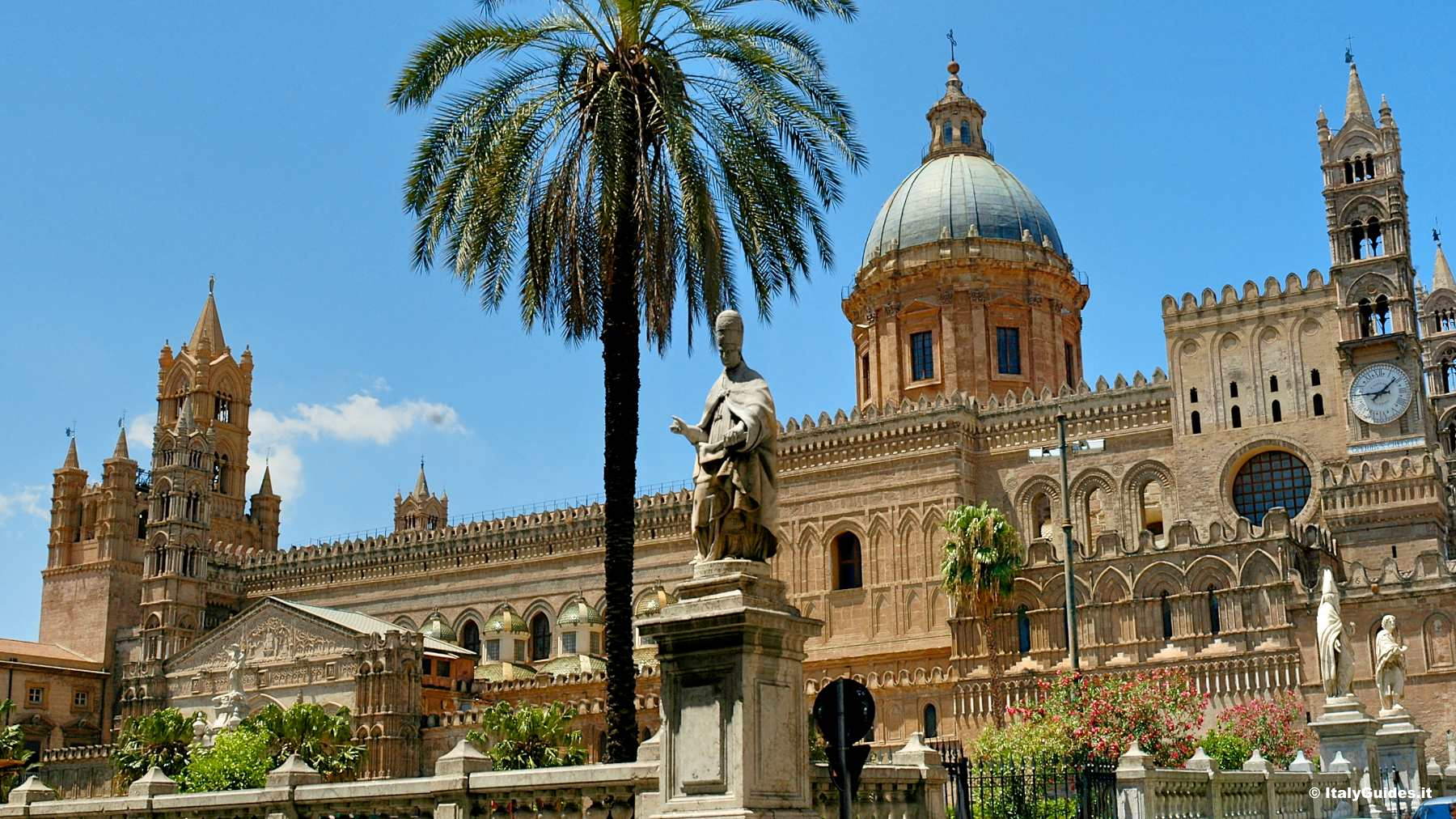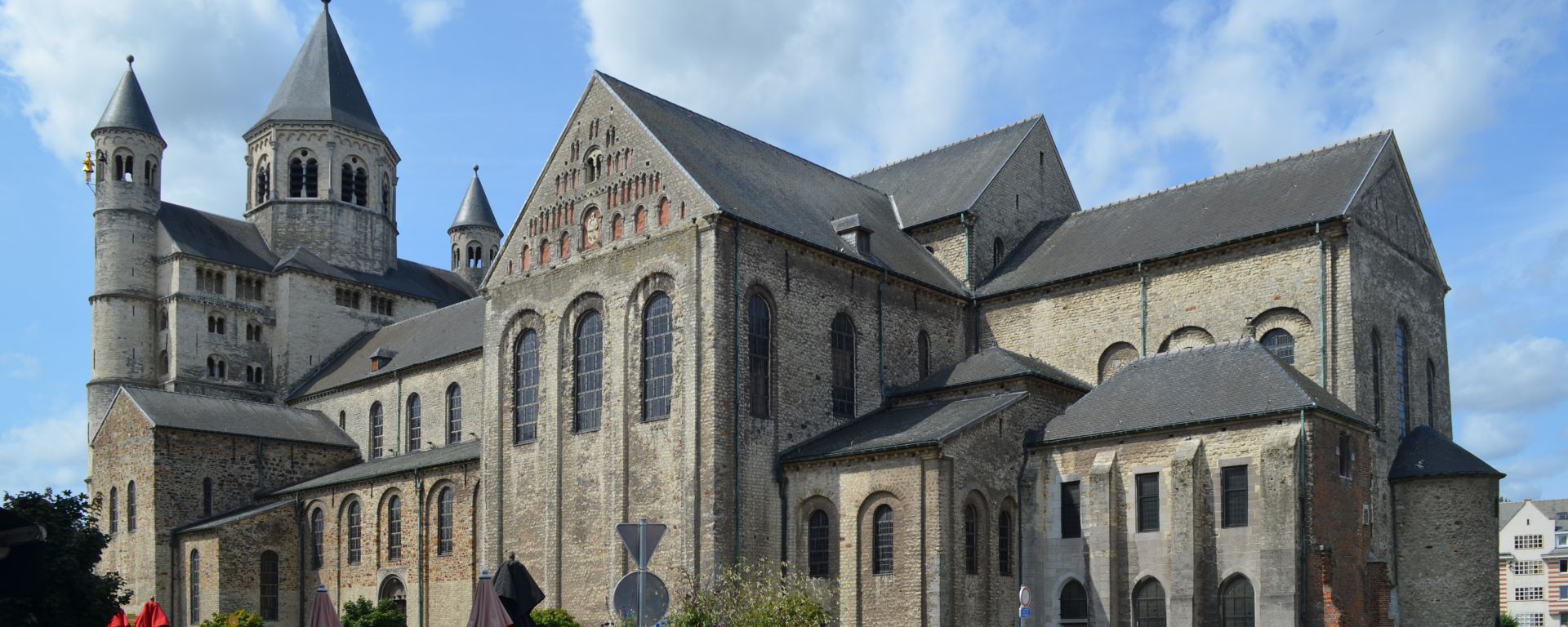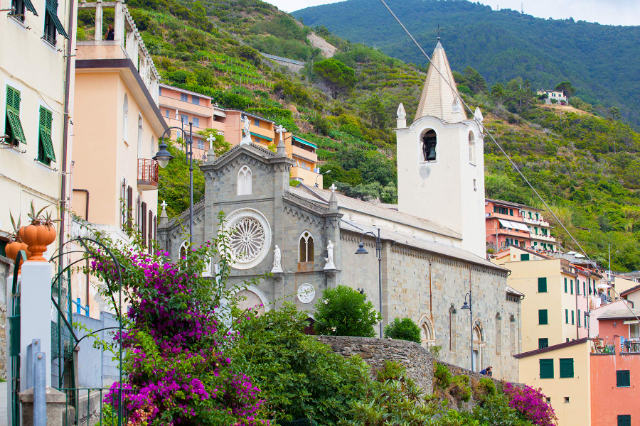The church of S. Maria in Frosinone, cathedral of the Diocese since 1987, was built on the top of the hill where the acropolis of the city stood in Roman times. The building, completely restored after the Second World War, is now in an elegant eighteenth-century style.
The church, located on the site of an ancient pagan temple dedicated to Mars, is of early Christian origin and would have been the seat of a diocese, which merged in the early eighth century with the nearby Veroli. In the Middle Ages, the primitive church construction was substituted by another one in Romanesque style, of which the historical bell tower remains a testimony. The first official document mentioning the cathedral dates back to 1147.The façade, anticipated by a wide staircase, is marked by three portals. The elegant Romanesque bell tower stands out on the left. The interior, with a Latin cross plan and three naves, is divided by a series of rounded pillars. Visitors are ideally "welcomed" by the two bronze statues of the two Popes from Frosinone, Saint Ormisda and Saint Silverio, placed at the sides of the central altar. The two popes, father and son, lived in the 6th century, the first successfully worked for the reunification of the Eastern and Western Churches. The statue of St. Ormisda is reproduced with his hands clasped to his chest: with his right hand he holds an iron cross while with his left hand he holds the book Epistole Hormisde.
The apse is decorated by the elegant episcopal chair in white Carrara marble, which has two full-length sculptural reliefs of the two patron saints, by the choir of canons and by the large mosaic depicting the Assumption of the Virgin.
The work of Carlo Mariani, placed in the apse in 1967, is inspired by the medieval miniatures of the Benevento-Cassino school, and constitutes the apex of an iconographic itinerary dedicated to the life of the Virgin and Christ.
The latter is developed in ten paintings that have adorned the walls of the church since 1963 and are the work of the artists Purificato, Fantuzzi, Montanarini, Ceracchini and Colacicchi. To complete this excursus on the works of art of the church we can add the paintings of Sarra, placed in the chapel of the Blessed Sacrament, the panels of the Via Crucis and the polychrome stained glass window of the facade.













